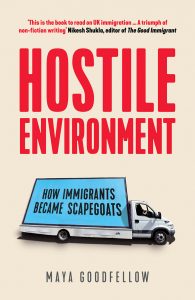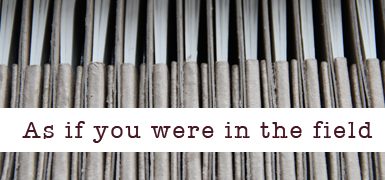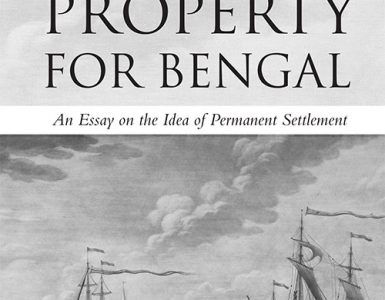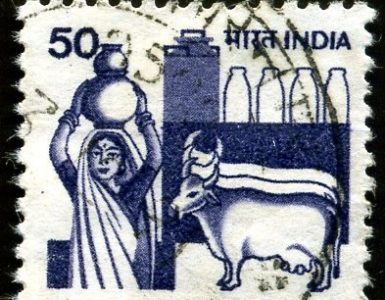Maya Goodfellow
‘I can’t even join up to the NHS 111 to give advice to people on the phone because they want someone who has got right to work.’ During the UK’s first lockdown, Anantha was explaining to me how he could have been helping during the pandemic. A doctor with a wealth of experience, he had been here for over a decade. But because of his immigration status he wasn’t allowed to work. ‘This is now officially my country, although the country might not acknowledge what I’m doing so therefore I feel very frustrated because I could do a lot more’ (Goodfellow 2020).
This cruelty is no accident; it’s how the UK’s immigration system is designed.
He wasn’t alone. I also spoke to Abanda who was once-upon-a-time a healthcare worker and who had trained extensively to do her job. But because she was in the process of trying to claim asylum in this country, she, too, was barred from working. As well as being denied the right to do their jobs, there were all kinds of state support that they were refused access to. This cruelty is no accident; it’s how the UK’s immigration system is designed.
During the pandemic the UK government applauded key workers – a significant proportion of whom are not born in the UK – and, at the same time, put together an even more restrictive immigration system that would make it near impossible for some of those same people to have come to this country. They refused to suspend the hostile environment in its entirety while they spoke endlessly of how important it was everyone ‘stayed safe’.

Then in the summer of 2020, once all of the clapping had died down and the apologies for Windrush were out of the way, they focused on the small number of people crossing the Channel in dinghies. Likely trying to settle in the UK for all kinds of reasons, they had no other viable routes into the country but there were repeated attempts to dismiss them as ‘illegal migrants’ (a stigmatising, misleading term). Many were then detained in a former army barracks, independently judged to be not fit for purpose.
Such anti-immigration policies have a long history. The ‘immigrant’ is at once the person who is desperately needed to staff the health service, taking up the trainee nurse spot that should be for a ‘British citizen’, and the ‘health tourist’ overburdening the NHS. The immigrant is a threat but at times a useful one, particularly when ‘they’ can be ‘controlled’ in certain ways. How might we make sense of these seemingly conflicting but overlapping positions?
Peo Hansen’s new book seeks to answer this. Focused primarily on the EU, he argues that even though wealthier countries in the bloc have an ageing population, labour market shortages, and rely heavily on workers from abroad, they won’t admit the reality of the situation. Instead, refugees and so-called low-skilled migrants are repeatedly and consistently treated as a drain on national economies.
Policy makers, academics and politicians are signed up to this thinking and, as Hansen explains, the consensus is almost rock solid. There is much research ‘proving’ this to be true, even some of the very people who advocate for refugee rights buy into it. Backed by ‘robust’ research, the fiercely anti-refugee politicians, along with the supposed centrists, bellow on repeat that an already overburdened country can’t possibly take any more people without hurting the ‘natives’, meanwhile the response from the refugee advocates is “give more people refuge, we can afford it”. The demands are polar opposites, but, Hansen argues, there’s a shared basis: that this will cost.
… the much anticipated and predicted financial hit never materialised, instead the opposite happened. Investment ended up as income for the areas that had the most new arrivals, which was used not just for these people but for everyone.
The book dismantles this major myth entirely. Using Sweden as a case study, Hansen examines what happens when a country takes in refugees and invests accordingly. Rejecting the EU-wide consensus, the Swedish government increased refugee-related spending between 2015 and 2017. But the much anticipated and predicted financial hit never materialised, instead the opposite happened. Investment ended up as income for the areas that had the most new arrivals, which was used not just for these people but for everyone.
Sweden bucked what was supposedly a trend. But amid the ongoing cries of immigration-induced economic calamity, there has been little acknowledgement of this. Even within Sweden what had happened was essentially ignored. Instead, politicians reverted to type.
The problem, Hansen says, is that the ‘economic drain’ consensus is based on ‘sound finance’, which continues to shape almost all thinking and work on the question. Despite what this approach tells us, a country’s budget is not equivalent to that of a household. Anchoring the analysis in modern monetary theory (MMT), Hansen challenges this thinking: “a government deficit is merely another way of expressing net financial savings (or surpluses) in the non-government sector. What most people take to be a bad thing – i.e. the deficit with the central government – is actually equivalent to what most people take to be a good and prudent thing, namely net saving by, for instance, households and businesses” (2021: 59).
The problems don’t end there: sound finance “fails to distinguish between real resources, such as labour, and financial resources” and, as he points out, “the real constraints lie with the former” (2021: 43). With its ageing population and severe sectoral labour shortages, many of the people who moved to Sweden more recently have begun doing essential jobs, in a workforce already made up of those born abroad. Yet still these very people are framed as economic burdens. By using MMT to challenge this dogma, Hansen reminds us that when we’re talking about immigration, we’re not just speaking about people’s movement but the supposed truths that help give meaning – often negative meaning – to that movement.
Still, we have to tread carefully. To show that working class people who migrate and people who seek asylum are not economic drains does not automatically upend the operating logics of the immigration system.So rooted are the orthodox arguments against immigration that exploding the economic drain myth may be one of many necessary and important starting points, but it must not be a sufficient end. This is one important part of a bigger change that is needed. Only focusing on this would be both too straightforward a plan and too narrow. And Hansen is not suggesting that we do so.
It would be too straightforward because it risks reifying some of the same thinking that helps produces exploitative policy. The UK government’s aim, for instance, is not only and always to stop certain people from migrating, it is also to ‘control’ who migrates and under what terms.
‘Low skilled’ migrants might be admitted into countries, but this is usually under certain conditions – people are denied access to particular services, often given only threadbare rights and time limited stays (similar is true too for people seeking refuge). “Temporary labor migration is a crucial method of accumulation”, Harsha Walia argues in her recent book Border Rule, “helping to facilitate the holding of more than $9.1 trillion of global wealth by 2,200 billionaires, while the world’s poorest 3.8 billion people hold $1.4 trillion” (2021: 45). Categorisation and exploitation are central parts of the bordering regime.
Hansen focuses on exactly this: using the EU’s Blue Card Directive to explain how even those in more secure positions are presented as potential burdens and so showing how bordering negatively impacts most people, albeit to different degrees (2021: 100-105). Though part of the rationale might come from the ‘economic drain’ argument, this exploitative model isn’t necessarily undone by shifting the economic narrative because of how it sorts people.
“I am not saying that Sweden or the EU as a whole should admit refugees because it benefits Sweden and the EU” (2021: 200), Hansen writes. Indeed, peoples’ humanity and rights shouldn’t be contingent upon what they contribute. During the UK’s first lockdown there was a momentary shift: more and more people recognised that many of the key workers they relied on were immigrants. This was channelled into a successful campaign to end the NHS immigration surcharge – a policy that means migrants have to pay twice over for the health service – for health care workers. But the vast majority of migrants – including those who were not health-care workers, such as delivery drivers through to the supermarket staff – do have pay this charge. Pointing out that certain people contribute hasn’t meant a universal shift in rights and it certainly hasn’t changed for those who don’t ‘contribute’ in the right way or at all. Instead, it deepened the stratified system that Hansen rightly critiques.
And though Hansen shows us that there are clear similarities between the way refugees and ‘low-skilled migrant’ are talked about and treated, it’s crucial to see the important, context-dependent differences too. While advocates for refugee rights might often buy into the ‘cost’ myth, ‘immigrants contribute’ is a regular response from migrants’ rights groups when faced with an avalanche of misinformation about the deleterious impact immigration supposedly has on the economy. Perhaps this is a necessary response to this toxic, widely accepted myth, but it also plays into the commodification of people who are moving. Bringing more people into the category of ‘contributor’ – that is, including people classed now as ‘low-skilled’ as contributing through the important work they do – doesn’t necessarily end this thinking entirely.
These scenarios are limited. There hasn’t been any real attempt to go for the jugular when it comes to the economic theory that determines how immigration is understood; in neither instance has this orthodoxy been challenged in the way that Hansen suggests is necessary. Such a change could ultimately transform how we make sense of ‘the economy’ – the way people are ranked, divided and seen to contribute. The very idea of ‘low skilled migrants’ being a burden may change but there will still be a focus on the ‘national economy’ (however the ‘economy’ is understood) and who or what will benefit it. Overturning the ‘economic drain’ logic doesn’t necessarily end a system of stratified rights and racialised forms of exclusion.
That is why as well as being too straightforward, a plan that only focuses on this would be too narrow. Just as the arguments about immigration are never just about movement, neither are we only talking about the ‘economy’ in the strictest sense of how this term is often understood. As well as being classed and gendered, ‘the economy’ is raced. Capitalism is not just capitalism, as Cedric Robinson (2020) showed us, it is racial capitalism.
… racism doesn’t only and always announce itself loudly in the debate and it’s not only the preserve of the far-right
Contrary to what we often hear, racism doesn’t only and always announce itself loudly in the debate and it’s not only the preserve of the far-right. That some people are constructed as a cost, or as low-skilled, can be intertwined with how they are racialised; certain groups are made vulnerable and constructed as threatening at the same time. The specificity and complexity of these relationships needs further examination, work that many are doing. But the supposed ‘problem’ immigration poses, then, is manifold: entangled together are ‘economic’ arguments with the ‘cultural.’
You can see that the two aren’t separate in the debate. The argument goes: as well as being an ‘economic drain’, certain groups of migrants are a threat to the welfare state – their ‘cultural difference’ undermines the country’s shared values and in turn erodes the solidarity that’s necessary for a decent net of social security. When politicians claim there’s a limit on how many ‘genuine’ refugees a country can ‘take’ or bemoan the impact of migration on certain areas, they’re also concerned with supposed ‘cultural’ difference. “Biological racism and cultural differentialism […] constitute not two different systems, but racism’s two registers” wrote Stuart Hall when thinking about ‘race’ and ‘ethnicity’ “[…] it seems therefore more appropriate to speak, not of ‘racism’ vs. ’cultural difference’, but of racism’s ‘two logics’” (2000: 224).
Here too you’ll find parts of the left are complicit. Just like the people who say the country can afford to take in asylum seekers, there are those who say there is a cultural cost to certain groups moving. There’s an assumption that there are inalienable differences between people that can be fixed through reducing immigration or making people ‘integrate’.
And so, the different ways race is produced through bordering and economic processes needs more focus. Because race is not an epiphenomenon, but a central part of the thinking that underpins immigration systems.
What is the aim of unpicking wilful misconceptions around immigration? Perhaps we don’t spend enough time asking this question. One reason is that it’s a route to make less violent immigration regimes. But this is also a potential path to overhauling bordering in its many forms. Dismantling economic orthodoxies are important for this. It means thinking about not just migration, but the processes that force some to move and stop others from doing so. And so, this is not only about ensuring mobility: but as Asad Rehman from War on Want argues, everyone should have the right and means to stay as well as move.

Maya Goodfellow is a Leverhulme Early Career Research Fellow at the Sheffield Political Economy Research Institute. Maya’s research is concerned with thinking about the relationship between capitalism, racism, and bordering. She is also a Visiting Research Fellow at The UCL Sarah Parker Redmond Centre for the Study of Racism and Racialisation. She is the author of Hostile Environment: How Immigrants Became Scapegoats, published by Verso in 2020.
Header Image Credit: Stephen Gidley
References
- Goodfellow, Maya 2020, Hostile Environment: How Immigrants Became Scapegoats, London: Verso.
- Hall, Stuart 2000. ‘Conclusion: the multi-cultural question’, in Barnor Hesse and S. Sayyid (eds.) Un/settled Multiculturalisms: Diasporas, Entanglements, Transruptions. London: Zed Books, pp. 209-241
- Hansen, Peo 2021, A Modern Migration Theory: An Alternative Economic Approach to Failed EU Policy, New York: Agenda Publishing
- Robinson, Cedric 2000, Black Marxism: The Making of the Black Tradition, 2nd ed., North Carolina: The University of North Carolina Press
- Walia, Harsha 2021, Border Rule: Global Migration, Capitalism and the Rise of Racist Nationalism, Chicago: Haymarket Books
TO CITE THIS ARTICLE:
Goodfellow, Maya 2021. ‘Dismantling the Myths of Migrants as Threats or Tourists’ Discover Society: New Series 1 (1) https://doi.org/10.51428/dsoc.2021.01.0006




